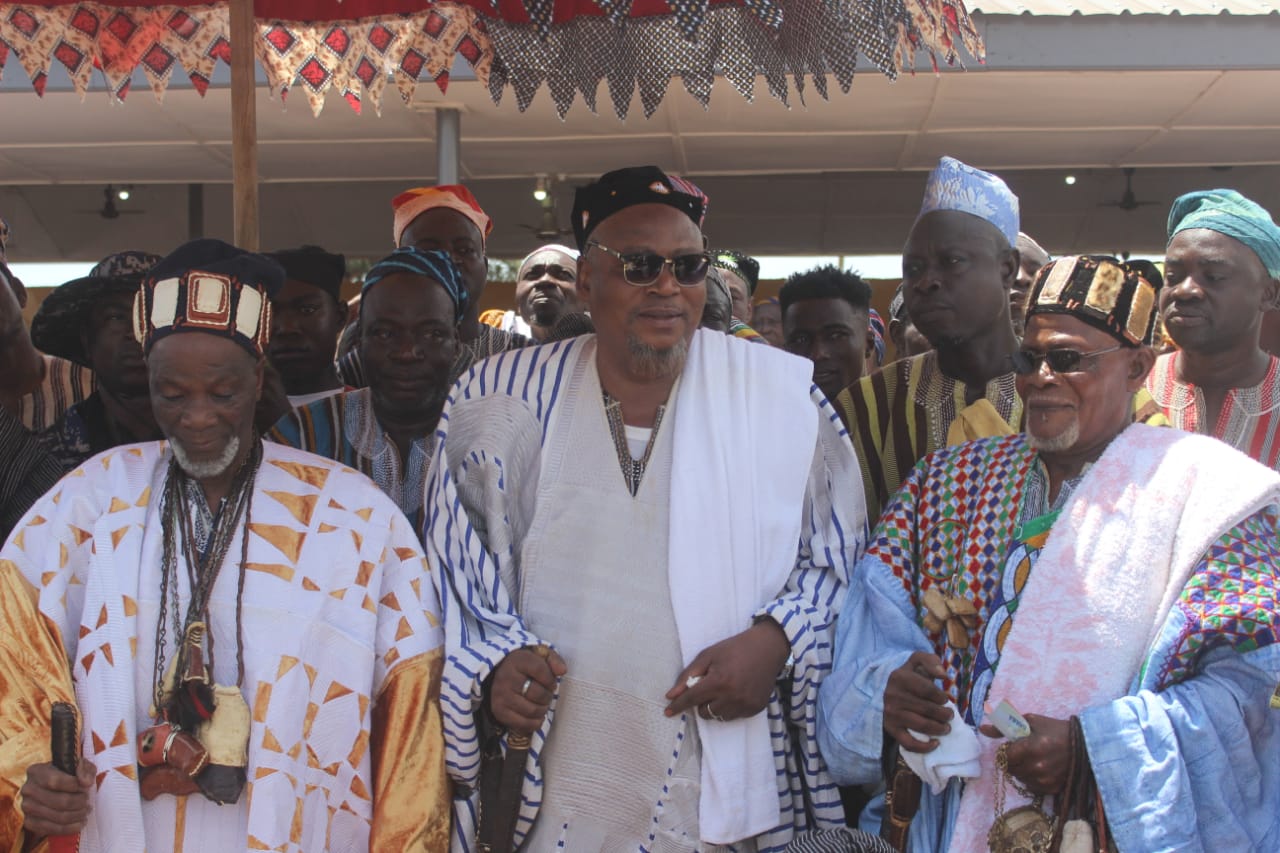Tourism
The origin of Damba festival and how it celebrates.
Published
2 years agoon
By
Abukari Alhassan Baba
The origin of Damba festival and how it celebrates.
A festival is an event ordinarily celebrated by a community and centering on some characteristic aspect of that community and its religion or cultures .Festivals that centered on cultural or ethnic topics also looks to inform community members of their traditions.
The Damba festival is an eldern celebration of the Mole-Dagomba people of Northern Ghana. The celebration accounts was brought from Zamfara state in Northern Nigeria into Ghana in the first quarter of the 18th Century during the reign of the sixteenth paramount Chief of Dagbon kingdom from 1648-1677, Naa Zangina. Celebration comes on the 11th, 17th and 18th days of the Damba month (moon), thus the third month of the Dagomba calendar.
Damba is the most important and widely celebrated festival among Dagombas which has diffused to other nearby northern societies such as Mamprusis, Nanumbas and Gonjas and also to the Walas in the Upper West region.
The origin of Damba as a festival is not certain. To many, it was initiated in commemoration of the birth and naming of Prophet Mohammed (Peace Be Upon Him). However, to most people, this claim is witherward to many known facts about the festival and the Dagomba people.
The name of the month Damba is according to the Dagomba calendar and not the Islamic calendar. It means it’s over 500 years since the beginning of Dagbon Kingdom. Also the name Damba is given to a very popular dance for the Dagomba royalty that almost certainly foredate the introduction of Islam into the Kingdom. Again, both the festival and dance are important rituals in the life of Dagombas. It can also be used to name a new born baby.
The only look alike religious parts of the festival relate to the slaughtering of animals on the 11th and 17th days of the month, which are said to be the dates of the birth and naming of the Prophet. One can therefore say that it is a combination of Dagbon and Islamic duality of cultures.
The festival is the occasion for most people to purchase new clothes as everyone wants to look beautifully. The males dress in colourful, hand woven smocks that are designed for dancing while women wear traditional hand woven cloth wrapped around their waists and wear beautiful jewelry.
How is it celebrate?
Speaking to historian in Dagbon culture, Haruna Mburidiba, Picking of rice is done twice in the damba month; thus on the 10th and 16th day of the month (Shankafa Gahimbu). The rice is prepared for the main day which is Naa Damba to serve participants. An animal slaughtered after the picking of the rice. The picking of the rice involves Chiefs, Princess, linguist, gongon beaters (Lunsi) and the imams. After picking of the rice, they fellow it with Quran recitation and pray for a peaceful celebration.
Somo Damba or Damba tooni usher in cultural display at the various chief palaces across the kingdom with the wives of the chiefs also showing their dancing prowess and some section of the general public.
On the 17th of the Damba month which is Naa Damba all the chiefs in dagbon will converge at Naa Gbewaa palace to celebrate with the overlord of Dagbon. The celebration involves the use of horses by the chiefs to the palace. Damba climaxes on the 18th day of the month which is known as Belkulisi in Dagabanli.
You may like
-


MTN Ghana donates to Dagbon Traditional Council to support damba celebration.
-


Sputnik V brouhaha: Manasseh bet with his manhood as he takes on Ken Ofori-Atta
-


Health Minister runs away from Ghanaians, go on two-weeks leave amidst vaccine brouhaha
-


Overpriced Sputnik V: Kweku Agyeman-Manu officially request for refund of money for unsupplied doses
-


Give Kweku Agyeman –Manu the benefit of the doubt – Yaw Buabeng Asamoah tells Ghanaians
-


Speak to us with some respect, our taxes pay you – NDC MP tells Nsiah-Asare



Mahama leads NDC to mourn with Kufuor over wife’s passing
Former President John Dramani Mahama on Wednesday, October 4 led a delegation from the National Democratic Congress (NDC) to visit...


Former First Lady of Ghana Theresa Kufuor reported dead
The former First Lady of Ghana and wife of Ghana’s former President, John Agyekum Kufour, Mrs Theresa Kufuor has been...


The most powerful tool for change is the right to vote – Mahama
The 2024 flagbearer of the National Democratic Congress (NDC), John Dramani Mahama, is rallying Ghanaains who have grown disillusioned with...


PFJ was a mere state resource looting platform – Minority
The Minority has descended heavily on the Akufo-Addo-led government for launching a second phase of the flagship Planting for Food...


ECOWAS is desecrating Ghana
The Director of Legal Affairs of the National Democratic Congress (NDC), Mr Abraham Amaliba has said the Economy Community of...


Prof Gyampo elected President of UTAG, University of Ghana branch
A Senior Lecturer at the Political Science Department of the University of Ghana (Legon), Prof Ransford Gyampo have been elected...
